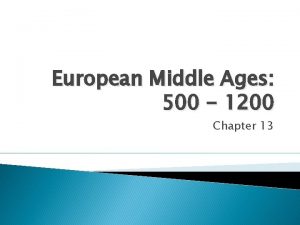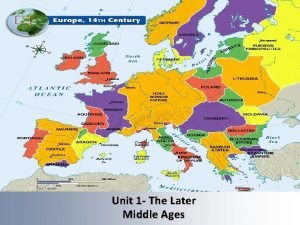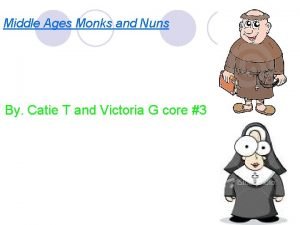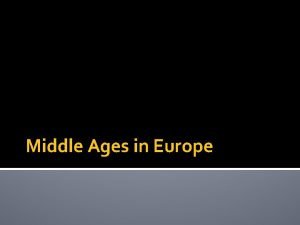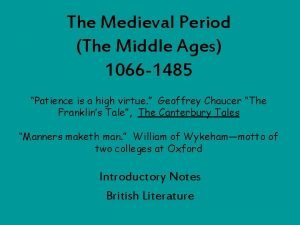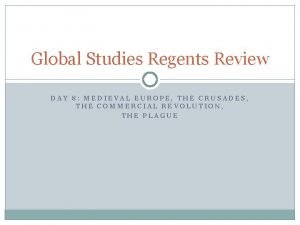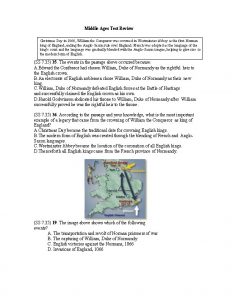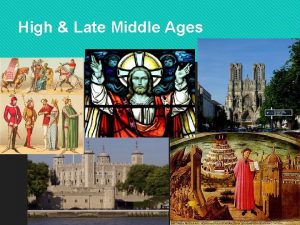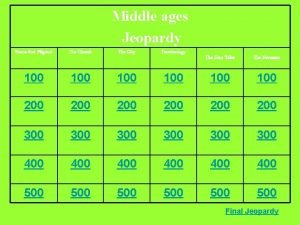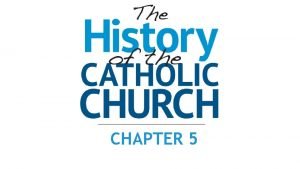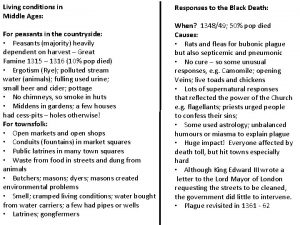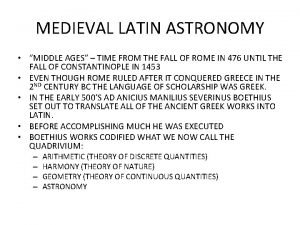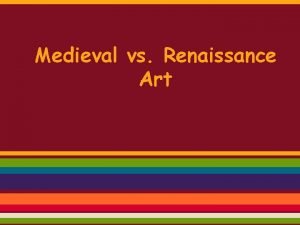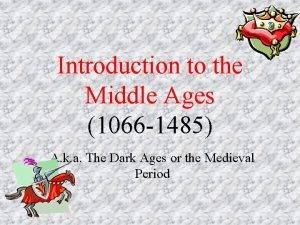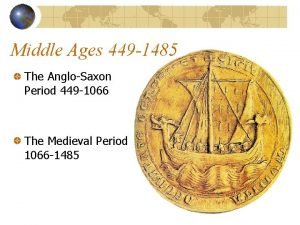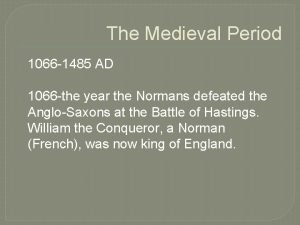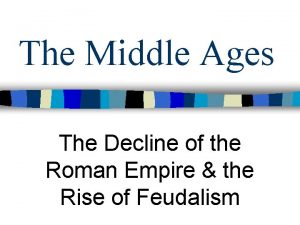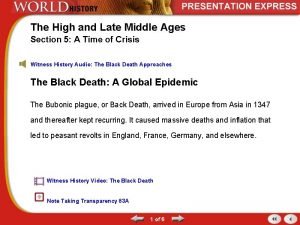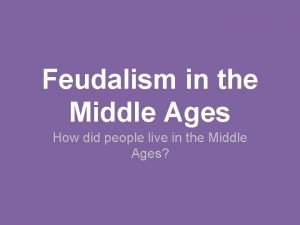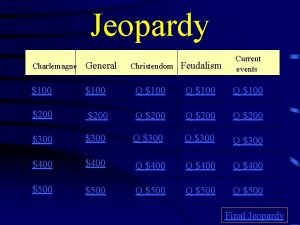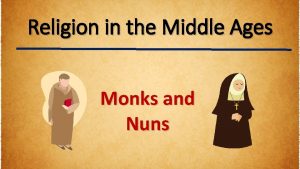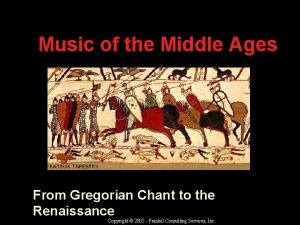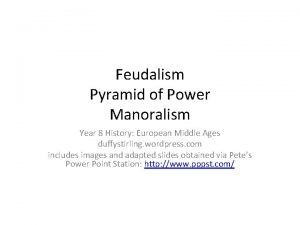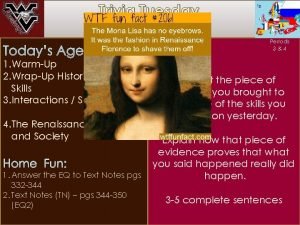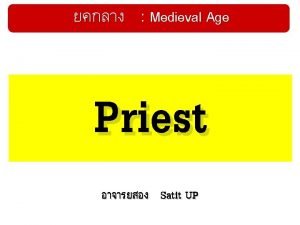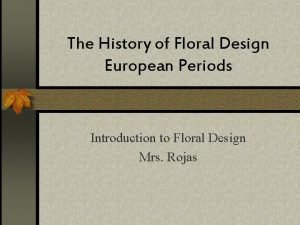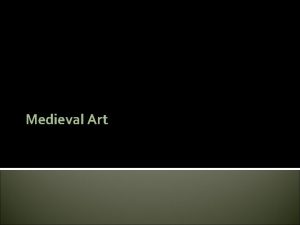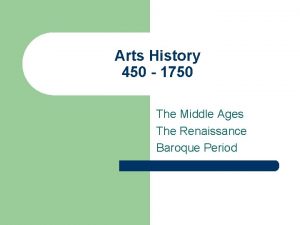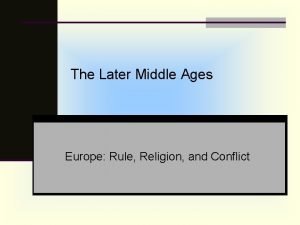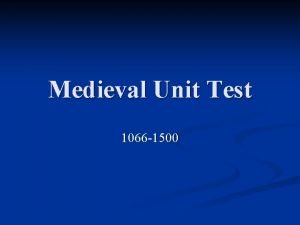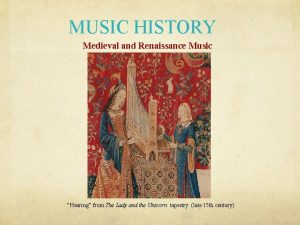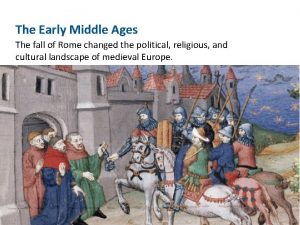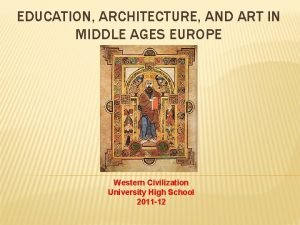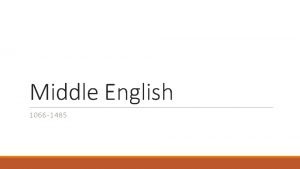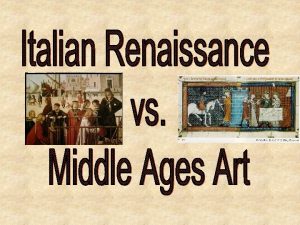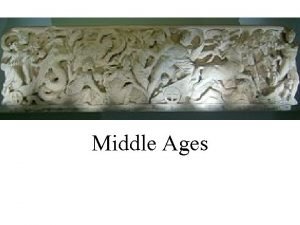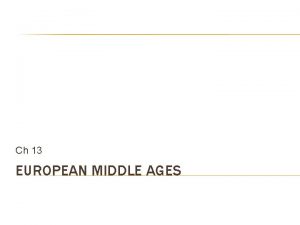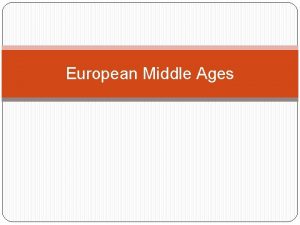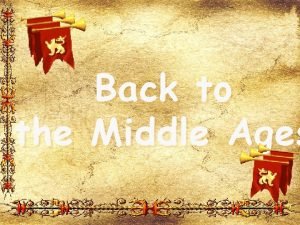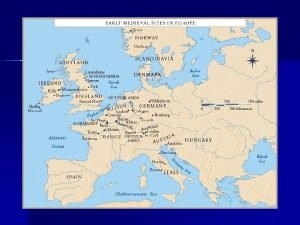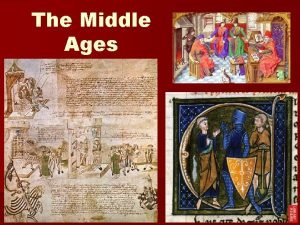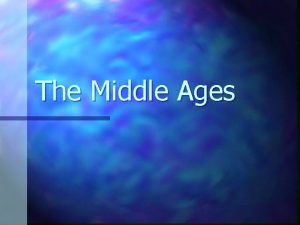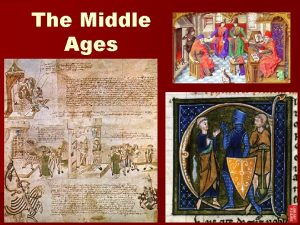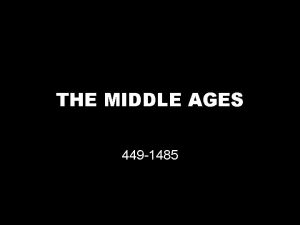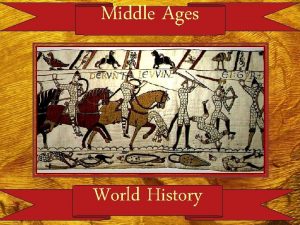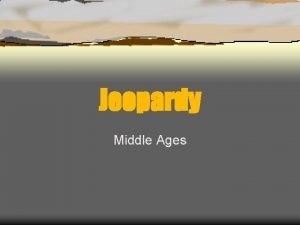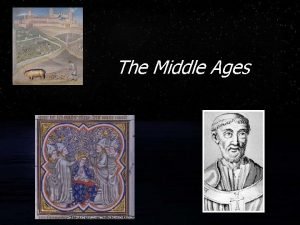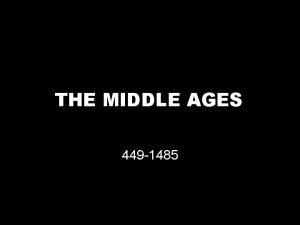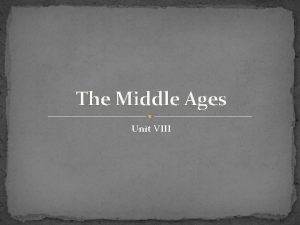European Middle Ages Middle Ages a k a













































- Slides: 45

European Middle Ages

Middle Ages • a. k. a. medieval period • era of European history from 500 to 1500 • A new society emerged, which was rooted in: 1. classical heritage of Rome 2. Beliefs of the Roman Catholic Church 3. customs of various Germanic tribes

Main Idea • Many Germanic kingdoms that succeeded the Roman Empire were reunited under Charlemagne’s empire.

Why does it matter now? • Charlemagne spread Christian civilization through Northern Europe, where it had a permanent impact.


Benedict • 480? – 543 • In 520, He wrote rules for monasteries • The rules were strict, but practical

Expansion of Christianity Monte Cassino: first monastery built by St. Benedict. It was destroyed by the U. S. A. during the Italian campaign, then later rebuilt. • Monasteries: religious communities developed in rural areas. There, Christian men called monks gave up their private possessions and devoted their lives to serving God.

Scholastica • Benedict’s sister • Headed a convent • Adapted the same rules for women • Both became a model for other religious communities in Western Europe.

Importance? • Monasteries became Europe’s best-educated communities. • Monks opened schools, maintained libraries, and copied books. • Best sources of history of the middle ages • Preserved the intellectual heritage of Rome

Gregory I • Secular: worldly. Deals with local authority, not religious or spiritual authority. • Popes became political authorities, as well as, spiritual authorities.

Charlemagne • “Charles the Great” • Frankish King • Christian Emperor of a unified Germany and Gaul (France).

Unites Western Europe • Battled Muslim invaders in Spain • Defeated the Germanic tribes of other kingdoms. • Spread Christianity. • A. D. 800 - builds an empire larger than the Byzantines.

Pope Leo III “Coronation of Charlemagne” by Raphael

Characteristics of Charlemagne’s Revival or Reforms 1. Limited the authority of the nobles. 2. Royal agents were sent out to govern his empire. 3. These agents made sure the powerful landholders, known as counts, governed their counties justly. 4. He encouraged learning by surrounding himself with scholars from all over the empire. He opened a palace school for his many sons and daughters and also ordered monasteries to open schools to train future monks and priests.

Charlemagne’s Legacy • Lothair • Charles the Bald • Louis the German


• Manor System • 3 field system • Horse drawn plow • Food Surpluses • Return to Town+Market economy: Guilds • Feudalism erodes


European Middle Ages

Mantlet Tortoise Another name for a battering ram Mangonel a type of catapult or siege machine used in the medieval period to throw projectiles at a castle's walls a large shield or portable shelter used for stopping arrows or bullets, in medieval warfare.

Battering Ram an ancient military device with a heavy horizontal ram for battering down walls, gates, etc. Siege Tower A specialized siege engine constructed to protect assailants and ladders while approaching the defensive walls of a fortification. Trebuchet A medieval catapult for hurling heavy stones.



The Code of Chivalry Knights were expected to follow the Code of Chivalry The Code of Chivalry was a set of rules for ideal behavior Many knights did not live up to the code because it was ideal rather than practical

Knighthood Knights-to-be learned the rules of chivalry during an early age As they progressed through the ranks of page and squire, they learned these rules firsthand

A Knight’s Duties A knight had three lords to which he swore fealty: His heavenly Lord, earthly lord, and his lady A chivalrous knight was ideally brave, loyal, and polite In addition, they were also supposed to be fair in battle and protectors of the weak and poor

Crusades • 1093 • Alexius Comnenus • Pope Urban II

The First Crusade v 1093 Muslim Turks sent threats of conquer to Alexius. v. Alexius sends an appeal to Robert, Count of Flanders. v. Forwarded to Pope Urban II. v 1095 speech from pope to Christians. v. Request of assembly of knights.


Spanish Inquisition • Reconquista or reconquest of Spain. • Church Court- suppression of heresy • Muslims and Jews were targeted • Medieval torture devices were used: (examples) “rack” “wheel” “drowning” “drawn and quartered” “quartered by horse” “dungeon” “stretched” “burned at stake”

• The rack is used to stretch your body apart. • The loops of rope on the top and on the bottom are tied around your ankles and wrists.



Broken on the Wheel

Quartered by Horses

Bubonic Plague

• Trade Routes • Also known as The Black Death • Spreads to Spain, Germany, England, and other parts of Europe and North Africa.

• Boats • Rats • Fleas • Two-thirds to three quarters of those who contracted the disease died.

• Town population • Trade • Revolts

• 1/3 population • Priests and the Church were out of answers • Jewish Population blamed • Anit-Semitism occurs

England 100 Years’ War France

100 Years’ War • Agincourt • Crecy • Poitiers • Joan of Arc

English Longbowmen • 6 feet, 6 inches long • Range: 180 -280 yards or 2 -3 football fields

• 10 “aimed” shots/minute • 60 -72 arrows per archer • Young boys would re-supply the archers during battle • “machine-gun” of the middle ages • 4 years to make one • A lifetime to develop a highly skilled “Longbowman” • Replaced by the 16 th century be arquebusers (muzzle loaded gun) and grenadiers (grenade throwers)

 Dark ages vs middle ages
Dark ages vs middle ages Renaissance vs medieval art
Renaissance vs medieval art European middle ages chapter 13
European middle ages chapter 13 Map of europe in middle ages
Map of europe in middle ages Middle ages
Middle ages Catiet
Catiet Manor system def
Manor system def Medieval period 1066 to 1485
Medieval period 1066 to 1485 Why art has been an integral part in european history?
Why art has been an integral part in european history? Egyptian period flower arrangements
Egyptian period flower arrangements Middle ages regents questions
Middle ages regents questions Middle ages test review
Middle ages test review Medieval vs renaissance
Medieval vs renaissance Sacred music of the middle ages
Sacred music of the middle ages Late middle ages timeline
Late middle ages timeline High to late middle ages
High to late middle ages Middle ages jeopardy
Middle ages jeopardy Similarities between middle ages and renaissance
Similarities between middle ages and renaissance Living conditions in the middle ages
Living conditions in the middle ages Astronomy in the middle ages
Astronomy in the middle ages Medieval vs renaissance art
Medieval vs renaissance art The middle ages 1066 to 1485 unit test closed book
The middle ages 1066 to 1485 unit test closed book Middle ages description
Middle ages description The middle ages 1066 to 1485: unit test
The middle ages 1066 to 1485: unit test Middle ages
Middle ages The high and late middle ages section 5 quiz
The high and late middle ages section 5 quiz Feudal system in the middle ages
Feudal system in the middle ages Middle ages jeopardy
Middle ages jeopardy Middle ages buildings
Middle ages buildings Monks and nuns in the middle ages
Monks and nuns in the middle ages Gregorian chant middle ages
Gregorian chant middle ages Feudalism pyramid of power
Feudalism pyramid of power Middle ages def
Middle ages def Renaissance vs middle ages
Renaissance vs middle ages The catholic church hierarchy pyramid
The catholic church hierarchy pyramid European floral design history
European floral design history Medieval art characteristics
Medieval art characteristics 450/1750
450/1750 Early middle ages
Early middle ages The middle ages 1066-1485 unit test
The middle ages 1066-1485 unit test Church modes
Church modes Early middle ages
Early middle ages Cathedral art
Cathedral art High middle ages
High middle ages The middle ages 1066 to 1485 unit introduction
The middle ages 1066 to 1485 unit introduction Dark ages vs renaissance
Dark ages vs renaissance


